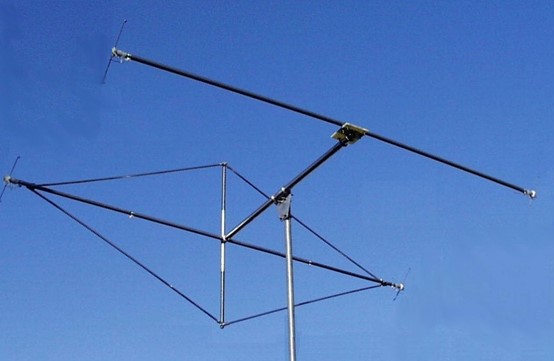Base Station Scanner Antenna: Connecting the Waves
In our increasingly connected world, the role of base station scanner antennas is nothing short of pivotal. These unsung heroes silently transmit and receive signals, facilitating the communication that keeps us connected, informed, and safe. In this comprehensive exploration, we'll delve deep into the world of base station scanner antennas. From understanding their types and functions to choosing the right one for your needs, installation and setup, maintenance, and peering into the future of this vital technology, we'll leave no stone unturned.

Introduction to Base Station Scanner Antenna
Definition and Purpose
Base station scanner antennas are specialized devices designed for one primary purpose: to facilitate wireless communication. They serve as the bridge between our devices and the vast network of cellular towers and base stations that underpin modern communication systems. These antennas are engineered to transmit and receive signals with precision, making them an indispensable part of our wireless infrastructure.
Importance of Antenna in Base Station Scanners
The antenna in a base station scanner is akin to the eyes and ears of a communication network. It plays a pivotal role in ensuring that signals are transmitted and received effectively, enabling clear and uninterrupted communication. The choice of antenna can significantly impact the range, signal strength, and overall performance of the scanner, making it a critical component.
Types of Base Station Scanner Antennas
Understanding the various types of base station scanner antennas is essential when selecting the right one for a specific application. Let's explore the most common types:
Omni-Directional Antennas
Omni-directional antennas, as the name suggests, transmit and receive signals in all directions simultaneously. These antennas are often used in urban areas where signals come from multiple directions. They're known for their versatility and ease of setup.
Directional Antennas
Directional antennas focus their signal in one specific direction, providing greater range and signal strength in that area. They are often used in rural or remote locations where signals need to be directed towards a particular base station.
Yagi Antennas
Yagi antennas are a type of directional antenna characterized by their long, narrow design with multiple elements. They excel in providing high gain and are frequently used in point-to-point communication.
Multi-band Antennas
Multi-band antennas are designed to work across multiple frequency bands. They are ideal for scanners that need to access various networks or frequencies, ensuring compatibility and versatility.
Factors to Consider when Choosing a Base Station Scanner Antenna
Selecting the right base station scanner antenna involves evaluating several critical factors:
Frequency Range and Compatibility
The antenna's frequency range must align with the scanner's operating frequencies. Compatibility ensures that the antenna can effectively transmit and receive signals within the desired bands.
Gain and Signal Strength
Gain refers to the antenna's ability to direct its signal and receive signals from a specific direction. Higher gain antennas provide increased signal strength but may have a narrower beamwidth.
Beamwidth and Directionality
Beamwidth determines the width of the signal path. A narrower beamwidth focuses the signal but may limit coverage. Consider the specific coverage requirements when choosing an antenna.
Durability and Weather Resistance
Base station scanner antennas are often exposed to the elements. It's essential to select an antenna that can withstand environmental factors like rain, wind, and UV radiation.
Mounting Options and Installation Considerations
Antenna mounting options should align with the scanner's location. Consider factors such as pole mounting, wall mounting, or rooftop installations. Additionally, ensure proper grounding to protect against lightning strikes.
Installation and Setup of Base Station Scanner Antenna
Antenna Placement and Height
Proper placement and height of the antenna are critical. Placing it too low can lead to signal obstructions, while mounting it too high may make it susceptible to strong winds.
Proper Grounding and Lightning Protection
Grounding is essential to protect against electrical surges, especially during lightning storms. Ensuring that the antenna is properly grounded is crucial for safety and equipment protection.
Cable Routing and Connectors
Cable routing should be carefully planned to minimize signal loss. Quality connectors and cables are vital for maintaining signal integrity.
Testing and Fine-tuning the Antenna
After installation, thorough testing and fine-tuning are necessary to optimize performance. Signal strength, quality, and coverage should all be evaluated and adjusted if needed.
Maintenance and Troubleshooting of Base Station Scanner Antenna
Regular Inspection and Cleaning
Routine inspection and cleaning of the antenna and its components help prevent dust buildup, corrosion, or damage that could degrade performance.
Damage and Wear Detection
Inspect for signs of physical damage or wear on the antenna and associated equipment. Early detection can prevent costly downtime.
Addressing Signal Issues and Interference
Troubleshooting signal issues or interference is essential for maintaining clear communication. This may involve adjusting the antenna's orientation or investigating potential sources of interference.
Troubleshooting Common Problems
Common issues like signal dropouts or reduced range can often be resolved through systematic troubleshooting, including checking connections and adjusting settings.
Advancements and Future Trends in Base Station Scanner Antennas
As technology evolves, so do base station scanner antennas. Some emerging trends and advancements include:
Emerging Technologies and Innovations
New materials and designs are continually improving antenna performance. Miniaturization and enhanced signal processing capabilities are also on the horizon.
Integration with Wireless Communication Systems
Antennas are increasingly being integrated into wireless communication systems, reducing the need for external, visible antennas.
Evolving Standards and Compatibility
With the rollout of 5G and other advanced communication technologies, base station scanner antennas are adapting to meet the demands of these new standards.
Conclusion
In conclusion, base station scanner antennas are the unsung heroes of modern communication networks. They facilitate the flow of information, ensuring that we can stay connected in a rapidly evolving digital landscape. From choosing the right antenna for specific needs to installation, maintenance, and keeping an eye on future trends, understanding the world of base station scanner antennas is key to seamless and reliable wireless communication.

 Mobile Signal Booster
Mobile Signal Booster